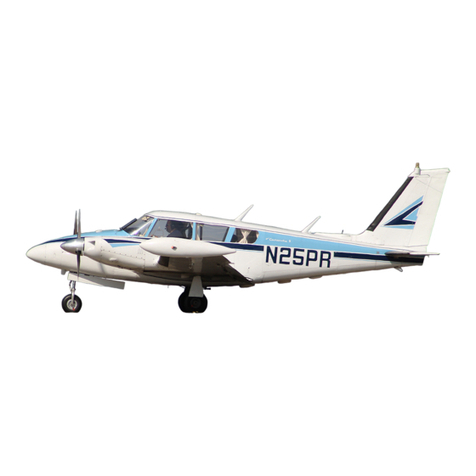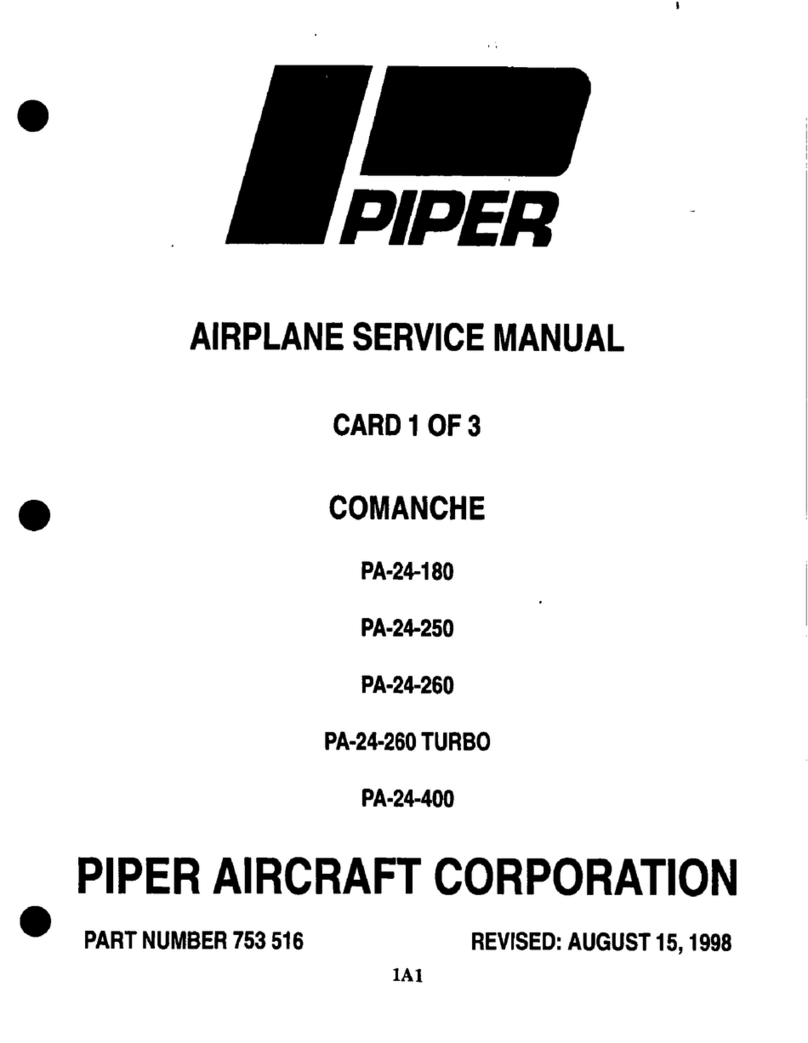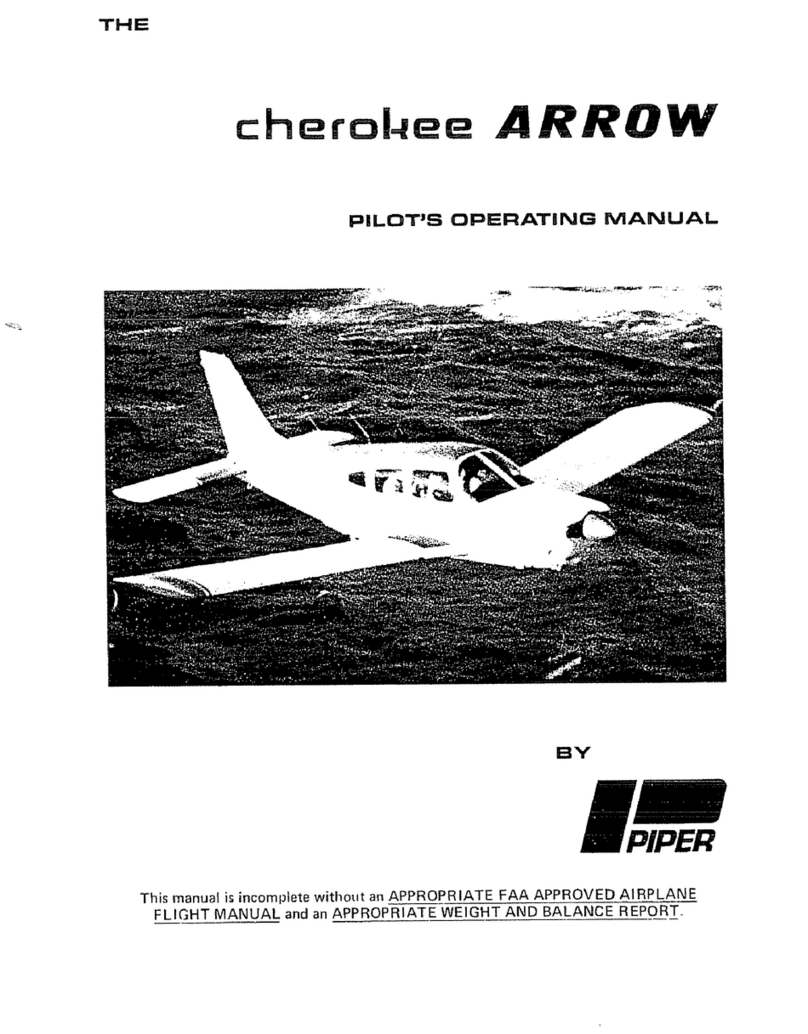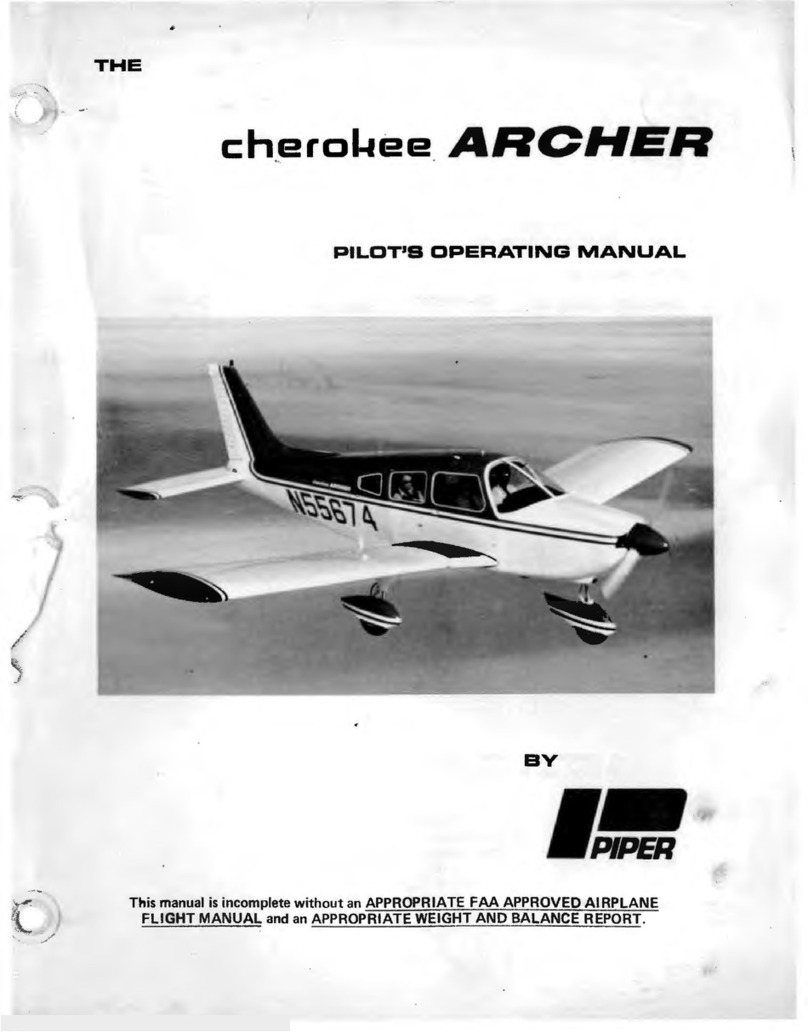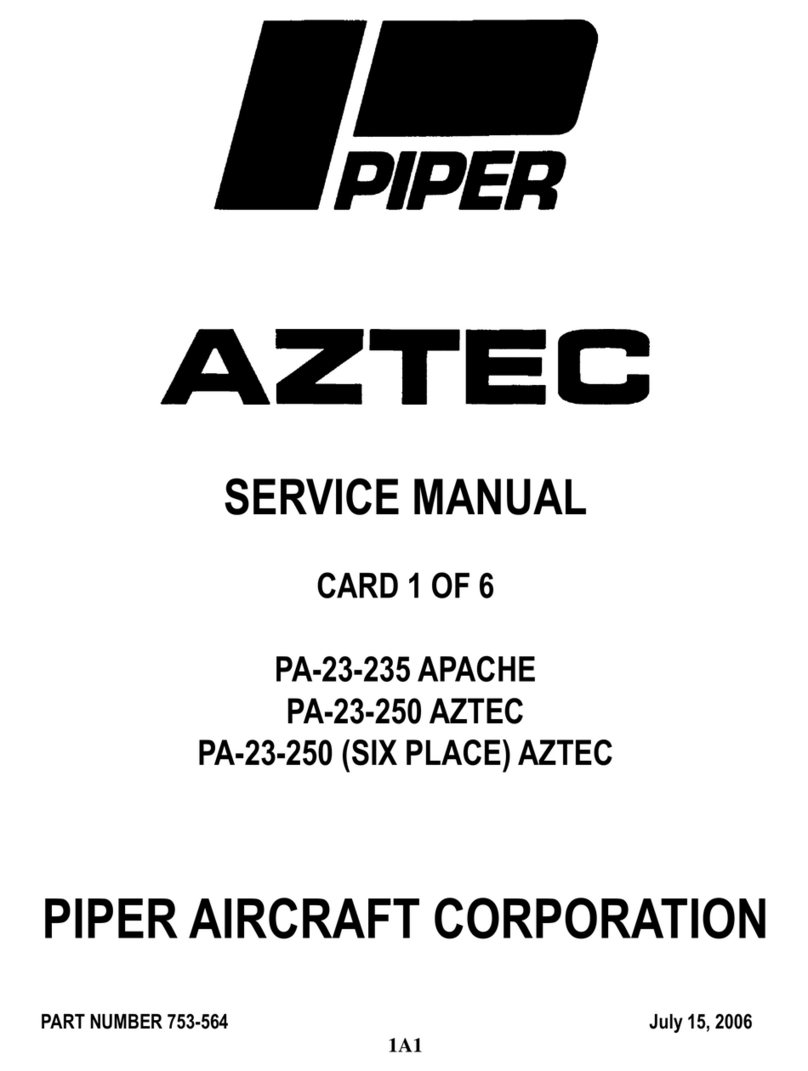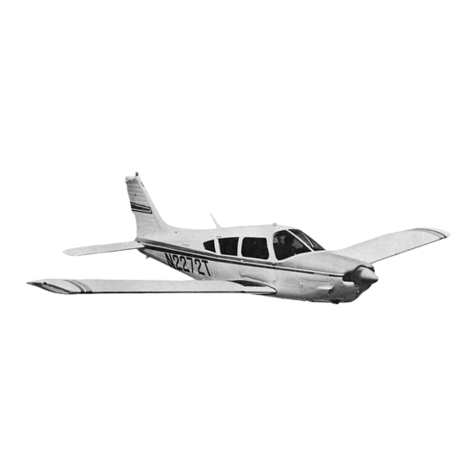PA-28-181, ARCHER III
REPORT: VB-2749 ISSUED: December 22, 2017
iv
REVISIONS
The information compiled in the Pilot’s Operating Handbook, with the
exception of the equipment list, will be kept current by revisions distributed to
the airplane owners. The equipment list was current at the time the airplane was
certified by the manufacturer and thereafter must be maintained by the owner.
Revision material will consist of information necessary to update the text
of the present handbook and/or to add information to cover added airplane
equipment.
I. Revisions
Revisions will be distributed whenever necessary as complete page
replacements or additions and shall be inserted into the handbook in accordance
with the instructions given below:
1. Revision pages will replace only pages with the same page number.
2. Insert all additional pages in proper numerical order within each
section.
3. Insert page numbers followed by a small letter in direct sequence with
the same common numbered page.
II. Identification of Revised Material
Revised text and illustrations are indicated by a black vertical line located
along the outside margin of each revised page opposite the revised, added, or
deleted information. A black vertical line next to the page number indicates that
an entire page has been changed or added.
Black vertical lines indicate current revisions only. Correction of typographical
or grammatical errors or the physical relocation of information on a page will
not be indicated by a symbol.
ORIGINAL PAGES ISSUED
The original pages issued for this handbook prior to revision are given
below:
Title, ii through viii, 1-1 through 1-14, 2-1 through 2-18, 3-1 through 3-42,
4-1 through 4-26, 5-1 through 5-34, 6-1 through 6-12, 7-1 through 7-66, 8-1
through 8-20, 9-1 through 9-54, 10-1 through 10-2.
